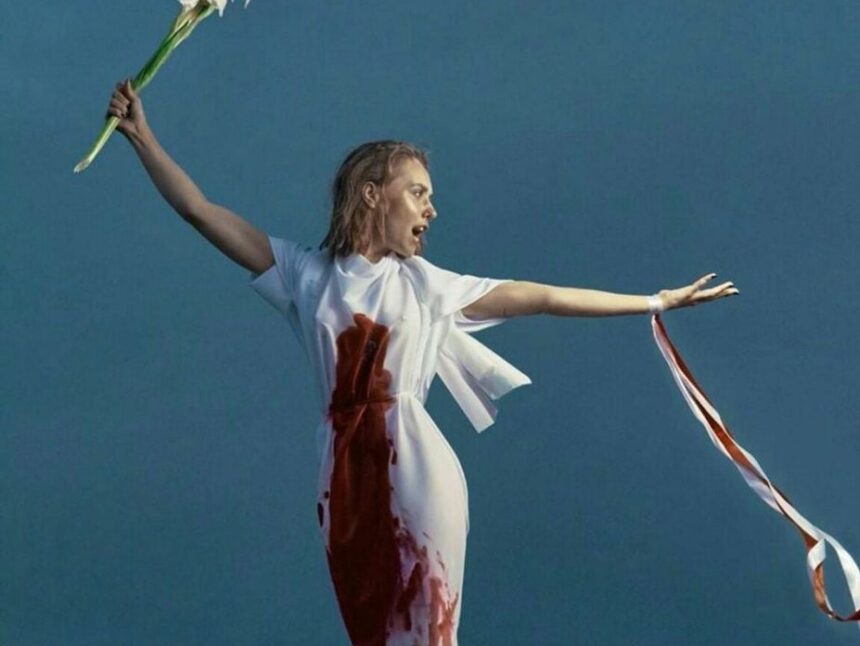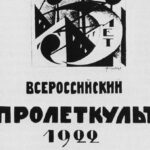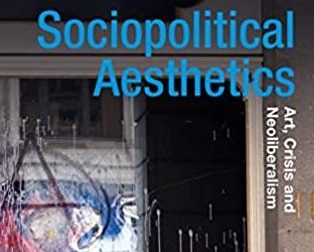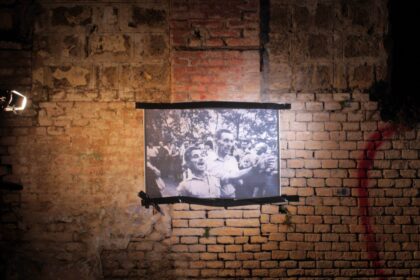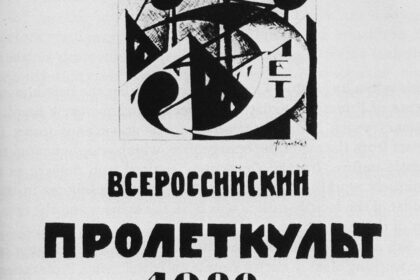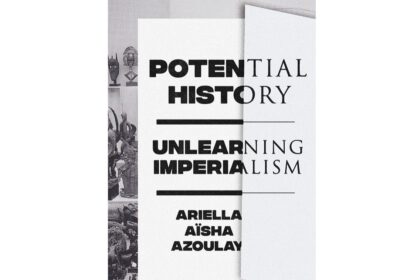No Time for Art? Strategies of Negation in Belarusian Art During the 2020 Anti-Government Uprising
Olga Kopenkina
After a devastating bombing or a political victory, there’s no time for art. That is to say no time for contemplative reflection, for philosophy. It is time for action; solidarity or celebration, and anything else seems inappropriate.
Doa Aly, “No Time for Art?” (2011) [1]
. . . Negation is the eventual concentration of a process through which is achieved the complete disintegration of an old world.
Alain Badiou, 2007 [2]
During the Arab Revolution in 2011 Egyptian artists initiated a pertinent debate about how artists should act during a revolution: do they have to represent themselves, whether individually or collectively, within a common struggle? Or, do they become a sort of “martyrs,” killing their own art practice in order to blend with revolutionary masses? Does the “time for action” really imply “no time [and space] for contemplative reflection,” or art? This debate found its logical continuation in artists’ responses to the year-long civil uprising in Belarus, whose development and level of social mobilization is quite comparable with that of Egypt.
The last presidential elections in Belarus took place on August 10th, 2020 and was marked by the state’s fraudulent efforts to ensure Alexander Lukashenko’s pre-determined victory. Since that time until February 2021, Belarusian citizens have conducted a peaceful but fierce political-aesthetic mobilization, primarily involving mass street demonstrations, but also socially networked organizing, and a short-lived wave of protesting strikes by factory workers. The resistance was met with the unprecedented levels of state violence, resulting in mass arrests, police brutality, extrajudicial killing and disappearances of protestors – actions which only triggered more activism on the streets. [3] The confrontation between people and the state in Belarus, in August and the fall ’20, reenacted the Manichean dualism between good and evil: a good, peaceful, and tolerant nation–most famously symbolized by the march of women-in-white waving flowers–was assaulted by an evil force embodied by the mustachioed male dictator and a heavily armed police force. Information and “aesthetic” wars, manifested in pro-government and anti-government rallies and social media posts, continued over the summer and fall of 2020. These actions proliferated and produced a new relationship between everyday life, artistic practice and political experience in Belarus.
The spread of street activism, protest-oriented art and political imagery has been one of the most astonishing features of the political unrest in Belarus. Across the country, professional actors, musicians, painters, book illustrators, and commercial graphics and Instagram artists weaponized their skills to produce works which became instantly recognized protest iconography. This conflation of art and political activism is, of course, not a new thing. From the Paris Commune to the Russian Revolution to Occupy Wall Street, artists and intellectuals have never simply catered to the needs of rebellious masses–they have sought to forge a new creative linkage between themselves and “militants,” and, as philosopher Alain Badiou argues, create new spaces where “politics is possible.”[4] About the same time that factory workers representing key Belarusian industries marched on the street across the country, artists began to utilize cultural institutions, repurposing them into platforms for unsanctioned actions and rallies. On August 13 actors at Minsk’s Janka Kupala National Theater, the major Belarusian state-run drama theater, staged an epic protest with theatrical props, slogans, and white-and-red banners (the latter is a popular symbol of Belarusian independence), condemning the state-sanctioned police brutality that occurred during the first days of the protests. Represented by their passionate director Pavel Latushko, the actors demanded an end to the violence and called for the resignation of the Minister of Inner Affairs, who gave criminal orders to beat and torture protestors. Almost immediately after this event, Latushko was fired by state officials, which led to the resignation of eighty actors in solidarity with their director, and the cancellation of the upcoming theater season. Following these events, on August 15th a group of artists gathered in front of the state-run Palace of Art, the major exhibition center in Minsk, for the action Art of the Regime. They stood in silence, holding up posters with the images of bruised and tortured bodies, enlargements from jpegs that had been shared on the internet before it was shut down. One artist appeared naked, exposing the hematomas he received while in detention. Staging the action outside of a state-run art institution emphasized both the cruelty of the regime, but also the new position cultural workers were taking in relation to the prevailing norms and protocols of art fabrication and display. Like their Egyptian counterparts, who had merged the category of “artist” with that of “martyr” during the Tahrir Square uprising, [5] the anonymous participants of Art of The Regime affirmed their autonomy by emphasizing their actual bodies, which had been violated by the regime.

The action Art of the Regime also hinted at what philosopher Alain Badiou defined as the avant-garde’s double negation, in which “political negativity”—the literal negation of the authority of state—is linked to “artistic negativity”—the abandoning of existing aesthetic paradigms in the spirit of the historic avant-garde).[6] This creative link between art and politics has been evident in the tactics of everyday Belarusian protests, for example, in practices that defied the official ban on “unsanctioned” national symbols. Refusing to obey the rules, citizens began to collectively make their own flags, hanging personal items that resembled the color combination of the historic white-and-red flag and coat of arms “The Pahonia”–traditional symbols of Belarus and the opposition–on their private balconies and windows. When more arrests took place, a citizen launched a petition, in which he demanded the authorities issue guidelines on how to dry laundry on balconies to avoid being arrested, namely, what colors of clothing were allowed, and what order items could be hung in. The petition collected 2500 signatures and generated a chain of absurd correspondence with the housing authorities, which was uploaded to the citizen’s Instagram page. In the archive of political resistance, ordinary citizens’ creative “negations”–both in situ and virtually–and works of professional artists, merge. Artists and protesting crowds borrowed slogans from each other, collaborated on creating new visualities and new languages that condemned the mechanisms of state violence. Both explored forms of solidarity and engagement, using “negation” as a form of expression. In one of the most powerful acts of citizens’ “negations,” Maria Kalesnikava, a prominent activist and member of the Belarusian opposition, tore up her passport as the Belarusian authorities tried to force her across the border with Ukraine to remove her from the country last September (she was returned to Minsk and jailed since then.) A portrait of Maria by Brest-based artist Anna Redko, in which she is holding the destroyed document of her citizenship, became immediately popular on the internet and even appeared as a projection on a building’s façade. Curiously, Kalesnikava’s act of civil disobedience echoed the minute-long, fateful performance “I Believe, or the Philistine World of Political Animals” by Minsk-based (now exiled) artist Alexey Kuzmich. On the day of the presidential election in Belarus, Kuzmich walked into the polling station in Minsk, drew a phallus on a ballot and stigmata on his palms, then posed naked, with the ballot stuck on his bare chest, for a photograph. Later that day, he repeated this performance on the street, during the violent clashes between protestors and heavily armed riot police. The performance resulted in the artist’s arrest and brutal treatment by the police while in prison. Using the strategy of negation, both actions, Kalesnikova’s and Kuzmich’s, assert a space for themselves in the face of political and artistic forces that delimit their freedom and autonomy (in Belarus, artists like Kuzmich are usually stigmatized by the state-controlled art institutions for being too transgressive). By mixing up art and anti-art—itself a long tradition of everyday resistance—artists seek to restore a social framework in which “negation,” not nihilism, balances between a normative aesthetic role and total “destruction,” laying the ground for future collective work.

Only a decade ago, when the art scene was mostly dependent on state-run institutions, Belarusian art was rarely driven by political concerns. During the uprisings of 2006 and 2010-11, when thousands of people protested the falsified results of the presidential elections—with the same flags raised and similar demands uttered—artistic responses were scarce. Over the past decade, however, the art scene has expanded beyond state-run museums and art centers as young artists have exhibited their works in a handful of independent art galleries, mostly in Minsk, demonstrating more autonomy from the petrified, Soviet-style state cultural institutions. Some of them began to see aesthetics as a locus for art’s transformative potential. However, they looked at sociality from within the segregated cultural clusters developed by the country’s private sector in the former industrial spaces in Minsk, as a part of the city’s neoliberal investment and revitalization plan. One of these spaces, Minsk’s “OK16,” occupies an entire district, incorporating galleries, cafes, and even a liberal arts school.[8]
It’s been said that capitalism, in its neoliberal form, made artistic dissent and experimentation more possible and even welcomed in liberal democracies. In the context of a state-controlled economy and government like Belarus—which has, for last ten years, taken a path of economic liberalization and privatized some sectors of the economy—artists not only became agents of capital’s expansion and liberalization, they also posed as great critics of the authoritarian state (at the expense of a critique of capitalism). This explains why Belarusian artists’ early involvement in the anti-government protest appeared as a “neoliberal” revolt.
In June 2020, two months before the elections and the government’s brutal crackdown on the protestors, the Belarusian authorities seized a corporate art collection that belonged to Belgazprombank, a private financial institution whose former director, Viktor Babariko, was the most prominent of Lukashenko’s opponents in the recent presidential elections (he was also arrested shortly after the collection was seized.) The valuable art collection, consisting primarily of works by native Belarusian artists of the so-called Paris School, including Marc Chagall, Osip Zadkin, and Haim Soutine, was removed by the authorities from its permanent display in a bank-sponsored gallery, located in the Palace of Arts, and locked in a warehouse. Ossip Zadkine’s sculpture The Return of the Prodigal Son (1955), gifted by Mr. Babariko to a cultural institution in Vitebsk, was confiscated from the host institution and hidden by state investigators. The absurd and politically motivated character of the government’s actions had since been countered by numerous memes circulating in social media. Some of them feature iterations of Soutine’s painting The Portrait of Eve– the most valuable and the most publicized work in the collection–in which Eve appears flanked by police or placed behind bars. In August 2020 people began to show up on the streets sporting T-shirts with images of the famous painting. At the same time, images of Eve, in all kinds of creative reincarnations, proliferated on Instagram.

Confronting a deteriorating social order, which was no longer able to protect its own cultural treasures from being held hostage in a political game, Belarusian artist Nadya Sayapina staged a performance entitled “The Heritage” that celebrated the incarcerated art collection. To engage viewers, who could still experience the collection in the bank-own gallery by swiping the barcodes inside the empty frames with their cellphones, Sayapina invited volunteers to stand in the venue with the copies of the absent artworks attached to their backs, while facing the wall. During a separate event, Alexander Zimenko, the curator of the collection, conducted a performative tour in the gallery describing the disappeared works to the visitors.
The growing pain over the detention of this beloved art collection,[9] inadvertently, obscured the economic realities of artists living in Belarus. During the 2010s gentrification swept across urban centers, resulting in the creation of new cultural hubs, even as artists’ actual working and living conditions remained impoverished. Besides the Belgasprombank’s corporate collection and OK16, Viktor Babariko is known as a sponsor of many cultural initiatives, including the annual art festival “Autumn Salon with Belgasprombank.” The festival featured an international jury, which selects the “best” artist from a large pool of participants competing for the right to exhibit at the prestigious Palace of Art. While many artists get an opportunity to exhibit there, only a very few receive a cash award. All of these private cultural activities ultimately benefited the state, which has been desperate for private money, including those generated by real estate investment via gentrification. The “winning” artists, however, remain impoverished because the art market in Belarus is rudimentary and undercapitalized, and there is no comprehensive system of compensation for the artists who participate in the exhibitions.

There is hardly any discussion about this problem amongst art professionals in Belarus. While state museums often solicit donations from young artists to avoid purchasing their works, corporate collectors have cultivated the clichéd image of the poor and hungry artist by promoting biographies of Soutine and Chagall, who suffered from poverty until they finally reaped success later in their lives. In 2019, the suicide of the talented artist Zakhar Kudin, who was a frequent participant in the bank-sponsored “Autumn Salon,” shook the local art scene. His family told the press that Kudin was so penniless that he couldn’t even afford bus fare to attend exhibitions featuring his work. Ironically, Alexander Zimenko, the director of the Belgasprombank’s Collection, once compared Kudin to Soutine. Indeed, his practice was not unknown to the audiences in Belarus, thanks to the documentary Real Art, made shortly before his death. Some of his works were collected by the National Art Museum, but that didn’t protect him from precarity.
Always politically volatile and economically dependent on Russia’s subsidies and foreign support (although the latter has significantly diminished due to the economic sanctions imposed by the E.U. and U.S.), Belarus is facing an uncertain future. To ensure its cultural survival, the country desperately needs trustworthy political and cultural institutions that can create a mechanism of public control over its cultural heritage. This may seem like an impossible task at the moment. Besides Viktor Babariko and Maria Kalesnikava (a musician, and a leader of Babariko’s election campaign), many artists, educators, and cultural workers have been arrested, jailed, or exiled by Lukashenko’s regime. The veteran dissident artist, Ales Pushkin, has been imprisoned since March facing criminal charges for exhibiting an artwork. Many galleries and cultural spaces have shut down, some for good.
Not only is the country’s cultural heritage in danger in Belarus, but human life as well. The country’s extrajudicial kidnappings and killings during the time of the uprising culminated in the death of the 31-year-old art educator and activist resident of a “protesting neighborhood,” Roman Bandarenka, who was murdered last November, while in police custody. In addition, the government has done very little to protect its citizens from COVID, refusing to impose social distancing rules and to put the country under lockdown. In this sense, grassroot anti-COVID activism and production of the infrastructure of self-care, in the form of organized networks of mutual aid facilitated through digital technologies and in-situ, became one of the protests’ main political outcomes. Meanwhile, government prosecutors continue to target those who help organize support for victims of COVID or who draw attention to systemic violence and precariousness, amidst the state’s general disregard of human rights. A vivid example of the government’s repressive politics was shutting down of the independent art gallery Mestsa, which hosted the show “The Machine is Breathing, and I’m Not,” organized by the grassroot activist group Zveno and the curatorial platform SHKLO+ to pay respect to Belarusian medics working during the pandemic. After only three days of the exhibition’s run, state housing inspectors ordered the gallery to move out due to the space’s “violation of safety measures.” [10] The short-lived show featured video and photography documenting the heartbreaking stories of COVID patients and doctors. It exposed a lack of public awareness around COVID and the stigma of infectious diseases in Belarus.

Despite the violent interruption of the cultural renaissance that loomed in Belarus last summer and fall, amidst the increased civic oppression, it is important for Belarusian artists and cultural workers to continue using the avant-garde practice of symbolic negation, “through which is achieved the complete disintegration of the old world.” (Badiou) [11] By intersecting art with civil actions (as was demonstrated by the action Art of the Regime and the exhibition “The Machine is Breathing, and I’m Not”), by building new coalitions and crafting legislation that will protect cultural producers from both the state’s incompetence and the machinery of urban redevelopment (including, compensation for artists who participate in museum exhibitions, free speech protections, etc.) the revolutionary promise of art might be restored.
Olga Kopenkina is a Belarus-born independent curator and art critic, living in New York City. She teaches at New York University and Fordham University. Between 1994 and 1998 she worked in the gallery 6th Line in Minsk, Belarus. Olga holds an M.A. from the Center for Curatorial Studies at Bard College (New York). Her curatorial projects include The Work of Love, The Queer of Labor (Franklin Street Works, Stamford, CT), Feminism is Politics! (Pratt Manhattan Gallery, NYC), Lenin: Icebreaker Revisited at NY Austrian Cultural Forum, Sounds of Silence: Art during Dictatorship at EFA Project Space, and others. Kopenkina is a contributor to publications such as Art Journal, Artforum, ArtMargins, Moscow Art Journal, Hyperallergic, Brooklyn Rail, and others. For more information see: https://www.olgakopenkina.org/
Notes
[1] https://moabdallah.wordpress.com/2011/06/15/no-time-for-art/
[2] Alain Badiou, “Destruction, Negation, Subtraction—On Pier Paolo Pasolini,” www.lacan.com/badpas.htm
[3] As for August 1, 2021, there are 604 political prisoners in Belarusian jails. In addition to presidential candidates and prominent members of their campaigns, there are imprisoned artists, journalists, bloggers, students, and ordinary citizens.
[4] Bruno Bosteels. Foreword to Alain Badiou, Philosophy for Militants (New York: Verso, 2012), p.5.
[5] https://moabdallah.wordpress.com/2011/06/15/no-time-for-art/
[6] Alain Badiou, “Destruction, Negation, Subtraction”
[7] A mixture of words “vyzhyvat” (‘to survive’) and “vyshyvat” (‘to embroider).
[8] Alexei Borisionok, “Arresting Images, Arrested Bodies,” L’Internationale Online, December 2020. Available at: https://www.internationaleonline.org/opinions/1050_arresting_images_arrested_bodies. According to Alexei Borisionok, neoliberal investment is epitomized by the activities of Belgasprombank, whose art collection is a subject of this article. A part of the bank’s investment was OK16, a cultural cluster on the gentrified October Street in Minsk, the former site of an old machine-tool factory.
[9] In June 2021, Belgasprombank’s art collection was returned in the Palace of Art and made available to viewers again. On July 6th, its former owner Viktor Babarika was sentenced to 14 years in jail.
[10] The state didn’t stop at shutting down the space–it also raided the homes of its organizers, activists Natallia Trenina and Tatsyana Hatsuro-Yavorskaya, and detained them.
[11] Alain Badiou, “Destruction, Negation, Subtraction.”

